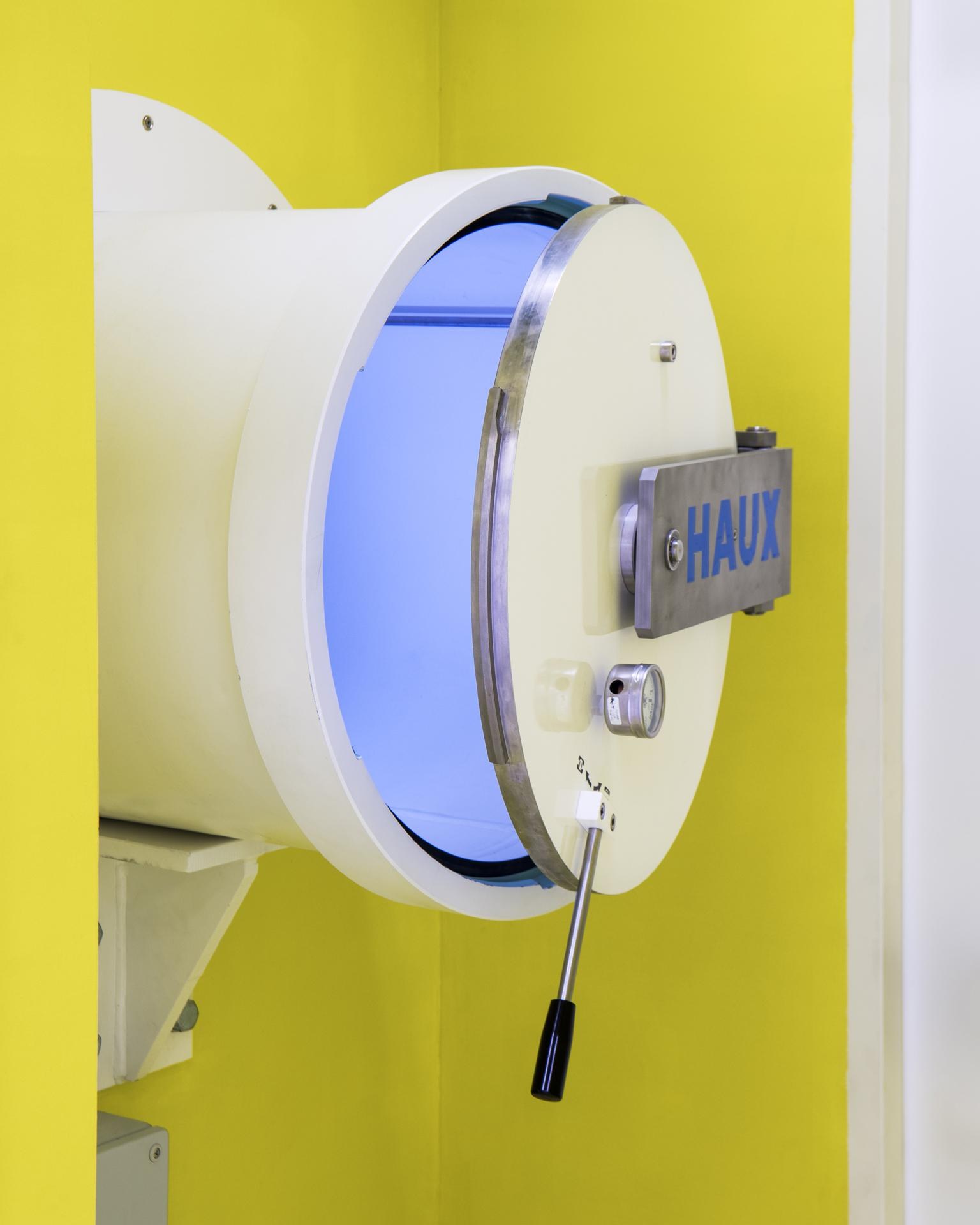Baro Laboratory/preventative and rehabilitation laboratory (Module 2 at :envihab)



Scientists at the Baro Laboratory at :envihab, the largest research institution belonging to the DLR Institute of Aerospace Medicine in Cologne, are able to conduct research into the health and performance of people who live and work in difficult conditions. Experiments are carried out under a range of atmospheric conditions, allowing the simulation of aviation, aerospace and mountaineering scenarios.
Large vacuum chamber simulates different atmospheric conditions
The Baro Laboratory, which constitutes :envihab Module 2 at the German Aerospace Centre (Deutsches Zentrum für Luft- und Raumfahrt; DLR), is the world’s biggest vacuum chamber to be made of reinforced concrete with straight walls. With a total area of 110 m2, variable space layout, pressure-reduced sanitary facilities and a personnel air lock, Module 2 offers the opportunity to carry out long-term medical studies on test subjects under reduced pressure (to a minimum of 300 mbar, or 9,000 m altitude). In addition, it allows the deployment of large experimental setups and aircraft subsystems.
The aim of the research is to examine how people are affected by specific environmental influences in aviation and aerospace scenarios, in order to come up with suitable measures for reducing their impact. In their experiments, the scientists are concentrating on the cardiovascular and locomotor system, as well as the effects of different atmospheric conditions on human physiology.
For such experiments, the facility offers several freely configurable measuring stands and opportunities for reducing the oxygen content in ambient air at normal pressure to a minimum of 12 per cent (corresponding to an altitude of 4,500 metres), enrichment with carbon dioxide by up to 3 per cent, and independently variable temperature and humidity control.
